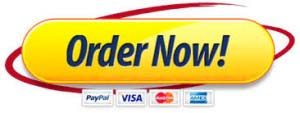Research an article as it relates to the implementation of evidence-based practice models that address safety and quality initiatives.

As a consultant, you need to develop an in-depth analysis and evaluation of the selected agency’s planning, organizational design, decision-making process, and implementation, and then provide recommendations for improvement. Therefore, you will conduct interviews with agency representatives and research related academic sources, the agency’s website, or any government website. The analysis will be read by the VP of accounts and client support, as well as by the leaders of the agency for whom you are working. Assignment Instructions Write a 5–7 page paper in which you: Describe the history of the selected agency and department by explaining its reasons (goals and objectives) for being established. Title this section History of [Selected Agency]. Analyze the organizational design of the selected agency and specific department by describing the design and organizational chart. Assess its effectiveness in making major policy decisions and providing services to its primary recipients. Title this section Organizational Design. Include a figure of the current organizational design within the text of the paper. Recommend a redesign of the agency’s structure to better serve the needs of the department’s businesses without jeopardizing the goals and objectives of the agency. Explain your reasoning for changing the design, and explain the change’s impact on the agency’s effectiveness in delivering quality services. Title this section Assessment of Organizational Design. Include a figure of the new organizational design within the text of the paper. Analyze 2–3 major milestones, factors (internal or external), or actors affecting the agency’s success and their influence on the effectiveness of the agency’s planning, organizational design, decision making, and implementation. Also, analyze 2–3 possible causes (internal or external) that appear to have the effect of impeding the organization’s implementation of its policy and meeting its goals and objectives. Title this section Evaluation of Planning and Implementation. Recommend 2–3 strategies (from the previous criterion) that the agency could implement to improve its effectiveness in the areas of planning, decision making, organization, and implementation, by explaining each recommendation and providing reasons each recommendation would bring about improvement. Title this section Recommendations for Planning and Implementation. Include a cause and effect diagram in the text of the paper. Provide the completed PAD599 Interview Template for 1–2 interviews, putting this information in the Appendix under Interviews. Go to Basic Search: Strayer University Online Library to locate and list 4–5 relevant and credible outside resources that support the content of this assignment. Include no more than one non-government website. Note: Follow the Guidelines for Interview Assignments at Strayer University provided in the Assignment Preparation in Week 1. Your assignment must follow these formatting requirements: Be typed and double spaced, using Times New Roman font (size 12), with one-inch margins on all sides; citations and references must follow APA format. Check with your professor for any additional instructions. Include a cover page containing the title of the assignment, your name, the professor’s name, the course title, and the date. Conduct an in-depth analysis and evaluation of an agency’s planning, organizational design, decision-making process, and implementation, and provide recommendations for improvement

Read the articles in your course materials about famed college coach and AD Debbie Yow. Discuss key strategic and operational planning decisions that she made along her storied career path. What did you find interesting about her approach to planning, organizing and delegating authority within her organization?

The concept behind the “triple bottom line” is that companies are responsible to all their stakeholders. This includes everyone who is involved with the company whether directly or indirectly, as well as the planet on which we all live. This approach sees shareholders as part of the stakeholder group, but only as part of it. Before writing your response to this week’s discussion, please review the following resource for more details on the triple bottom line: https://www.mindtools.com/pages/article/newSTR_79.htm.
How would you implement the concept of Triple Bottom Line (People, Planet, Profit) at the NAB company you created?
Check out Chapter 14: Social Responsibility & Sustainability for more information.
Keep the following format in mind as you complete this week’s discussion:
Profit – When looking at profit from this theory’s perspective, the idea is that profits will help empower and sustain the community, and not just represent a benefit for the shareholders. (Briefly explain your approach.)
People – Discuss your approach to care about suppliers, customers, community, employees. (For example, to care about employees you can provide a good working environment, training and development opportunities, healthcare, etc.)
Planet – Discuss your approach to minimize your impact on the environment. (An example would be to create processes to minimize waste or reduce energy usage; maybe you are using recycled materials, etc.)


The future of healthcare marketing is promising; however, balancing strategies with tactics is a controversial topic. Some argue that healthcare marketing initiatives must rely on empirical evidence to produce desired results, while others posit that classic intuition is the most effective driving force of successful initiatives. As the industry continues to advance, this debate will continue to grow, and with it, the potential risks for leaders associated with healthcare marketing will also grow.
From the South University Online Library, read the following articles:
Discuss the implications that evidence-based research has on the success of healthcare marketing. Proffer whether you would rely on empirical research or personal perceptions and intuition in the decision-making process as it relates to healthcare marketing. How do changes in data over the lifetime of a marketing plan impact the decision-making process of leaders in healthcare? How can healthcare professionals limit potential risks in healthcare marketing?
